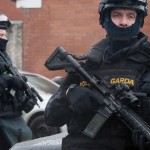US Police use New Technology to Detect Gunfire

ShotSpotter is a new technology that works by using a series of acoustic sensors to recognise gunfire and triangulate it’s positioning. Specialised software is used to record audio throughout the city and recognise sounds that correspond with that of a gunshot while filtering out other sounds. The data is then sent to a human technician who reviews the findings before alerting police in the neighborhood. The technology has helped reduce the time from gun shot to police alert to within 30 to 45 seconds.
 In 2014 the company who created ShotSpotter tested the technology across 47 US cities. They were able to track an average of 105 gunfire incidents each day; that’s 4.4 shots every hour. More recently, police in Pittsburgh who have been using the technology said that it helped them quickly learn of a recent murder and apprehend a suspect.
In 2014 the company who created ShotSpotter tested the technology across 47 US cities. They were able to track an average of 105 gunfire incidents each day; that’s 4.4 shots every hour. More recently, police in Pittsburgh who have been using the technology said that it helped them quickly learn of a recent murder and apprehend a suspect.
Pittsburgh Councilman Ricky Burgess called the new technology “very successful”. He added: “It is already helping solve crime. We believe it reduces crime and has increased public safety.”
The technology has also been used in Milwaukee, where ShotSpotter has played a role in catching several criminals shortly after they fired shots. Data obtained from the system has been used to obtain a number of convictions, including a murder condviction. As well as immediate response following an gunfire incident, Milwaukee police also use ShotSpotter to recover shell casings, which can in turn be used to to provide forensic evidence in court.
One of the questions facing this new policing method is whether is could create false positives. In one of the earliest systems, created in 2008, it was found by a study that fireworks were incorrectly identified as gunfire. The study also found that accurancy depended on where the technology was deployed. It is easy to see how sound could be echoed off certain buildings and mislead police as to the location of the gunshots. However, since the introduction of human analysis into the system before a final alert is sent to patrol cars, it has worked very well.
Perhaps the most supportive evidence of ShotSpotter’s usefulness is that in areas where it has been deployed, only 14% of gunshot incidents it identified were reported to police by the public. Shotspotter enables police to forgo reliance on emergency calls from the public, who are often too intimidated to report a crime. There has also been a reduction of 18% in the ammount of shots fired in areas that are connected to Shotspotter, making the technology not just a crime identifier but a crime prevention measure.
Whether this technology could ever be used in Irish cities remains to be seen. Recording audio in public spaces brings up the contentious debate about state surveillance, which many people strongly oppose. Yet, as the technology progresses it will undoubtedly be used in more cities around the world, and the results so far have been hard to argue againt.
For Pittsburgh Councilman Ricky Burgess, the technology speaks for itself: “It’s an incredible technology. It is helping the East End solve multiple homicides.”

